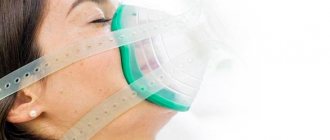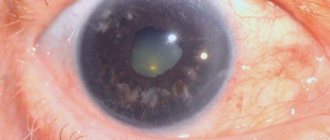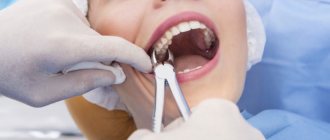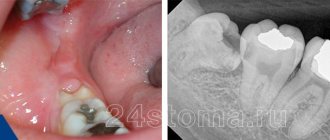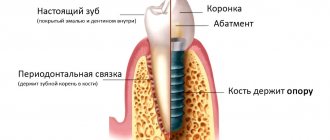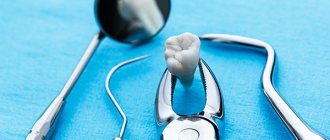Scarring
Healing of a granulating wound occurs through scarring and epithelization. At the final stage of healing, collagen fibers appear among the cells of the granulating tissue, the number of granules decreases, and the number of fibers increases. Ultimately, the fibrous substance passes into the connective tissue and forms a scar.
When wounds heal by primary intention, delicate scar tissue is formed, which tends to resolve.
In case of healing by secondary intention, a rough scar is formed, which will not be easy to get rid of.
↑ Wound (inflammatory) purulent exudate
Pus (Pus) is an inflammatory exudate, rich in protein and containing cellular elements, mainly neutrophils, and a large number of bacteria (streptococci, staphylococci, less often anaerobes), enzymes. It varies in color, smell, morphological and chemical content. The reaction is alkaline, sometimes (with a high content of fatty acids) it can be acidic. Under the influence of enzymes that pus is rich in, the resorption of dead tissue and decay products occurs, which undergo further breakdown. The source of enzymes is both destroyed cells and bacteria.
Under the influence of glycolytic enzymes, lactic acid is formed, which is one of the acidity factors.
Proteolysis products are absorbed into the general bloodstream and cause intoxication (resorption fever).
Types of wound healing
According to the classification of I.V. Davydkovsky, the following types of wound healing are distinguished:
- closing the defect of the epithelial cover, which occurs when the upper epithelial layer is damaged;
- healing under a scab, or healing without a scar. Observed on mucous membranes in case of minor defects.
- healing by primary intention, or healing without suppuration. Characteristic of wounds with damage to the skin and tissue underneath.
- healing by secondary intention, or healing through suppuration and granulation. Occurs with extensive wounds, accompanied by foreign objects entering the wound, tissue necrosis, microbes and infections.
Indications for secondary intention
When there is a high risk of infection, surgeons choose secondary intention of damaged soft tissue. Necessary conditions for treatment:
- Abundant microbial insemination of the injured surface.
- Large wound size.
- The presence of foreign bodies, dirt, necrotic tissue, and blood clots in the pathological cavity.
- Diseases for which the patient is not indicated for serious surgical interventions followed by excision of a large amount of tissue. Secondary intention is a safer method.
Important factors for determining the tactics of surgical treatment are the contamination of the injury with pathogenic microorganisms and the distance between the edges of the wound. The healing process can be accelerated by excision of the affected flaps. To improve the effect of the operation, drug therapy is prescribed.
Stages of healing
The wound healing process goes through three main stages: inflammation, regeneration, and restoration of the epithelium.
The inflammation phase begins immediately after injury and in an uncomplicated state lasts for 4–5 days. During the hemostasis stage, platelets attach to sites of injury and cause a chemical reaction that activates fibrin, which forms a matrix network and binds platelets to each other. This is how blood clots form, blocking damaged blood vessels and stopping bleeding.
At the stage of proliferation and regeneration, the process of angiogenesis, collagen deposition, and the formation of granulation tissue (young connective tissue formed in places of defects) occurs. The regeneration stage can last 2–4 weeks depending on the size of the defect.
The final stage is the formation of the epithelium. Depending on the severity of the injury, the process can last from several weeks to a year or more.
How is the procedure performed?
The recovery process is divided into three phases:
- The stage of acute inflammation is much more pronounced during infection. Before secondary intention, it is necessary to eliminate the source of microbial proliferation and prevent invasion into surrounding tissues. At the border of the pathological focus, a leukocyte shaft is formed as a protective barrier, which contributes to the gradual cleansing of the wound. The process takes from 3 days to 2 months. The severity and duration of the phase depends on the volume of damage, the composition of the pathogenic microflora, the body’s resistance, and the general condition of the patient. After complete melting of the necrotic, fibrinous masses followed by rejection, the wound is characterized by the absence of mucus. An injured cavity is formed. The zone is limited by a clear demarcation line, accompanied by the release of serous-purulent exudate or pure pus.
- During the wound regeneration phase, granulation actively develops. Outwardly it resembles small, pale pink nodules, the size of a grain. It is richly vascularized, contains a large number of vessels, and bleeds heavily when damaged. If the regeneration process does not occur correctly, the formation of hypergranulation begins, a phenomenon popularly called “wild meat”. In secondary intention, surgeons cauterize or excise excess tissue. If a biological sample is examined on a microscope, one can see hypertrophied granulation cells with an abundance of small vessels.
- The scar formation stage is the final phase of wound healing through secondary intention. The epithelium grows at different rates from the border of intact skin to the center in the form of a pale gray border. A special feature of the treatment method is a rough, multi-rayed scar with an irregular shape.
The duration of the recovery process after secondary intention depends on many factors.
It is necessary to study the aggressiveness and resistance of microflora to antibacterial therapy. The doctor must take into account the patient’s condition - lack of nutrients, cachexia, state of immunodeficiency, concomitant somatic pathology, large blood loss, environmental factors - exposure to radiation, chemical pathogens. If antibiotics are ineffective and pathogenic microflora penetrate deeply, an operation is performed to excise the affected skin, subcutaneous tissue, and muscles. In some cases, limb amputation may be necessary. Arthroscopy is used.
In the phase of acute inflammation, it is advisable to clean the wound with hydrogen peroxide and treat the pathological focus with antibacterial ointments. In case of severe condition of the patient with secondary intention, antibiotic therapy should be used.
Wound treatment
The choice of wound treatment method largely depends on their type (infected or necrotic, wet exuding or fibrous granulating, trophic ulcers or bedsores). Only a doctor can choose the optimal solution for treating each type of wound.
In addition, at each stage of wound healing, it is necessary to use a different agent: one that promotes the removal of exudate, the formation of granulation tissue, accelerating epithelization, etc.
When treating wounds, you need to remember that the wound does not heal on its own, but thanks to the body’s resources aimed at healing it. The immune, endocrine, and circulatory systems are involved in this process. A qualified doctor, along with treating the wound itself, will definitely prescribe a vitamin complex to maintain the body.
How to speed up healing
The speed of wound healing varies. It depends on the nature of the injury and the individual characteristics of the patient, such as age, nutrition, and medications taken.
To speed up healing, it is necessary to provide optimal conditions for tissue regeneration at each stage. This role is fulfilled by therapeutic dressings designed for each stage of healing.
The method of hydrotherapy has a positive effect. Its essence consists in the sequential use of two dressings HydroClean and HydroTac. Using the first, the wound is cleaned, and then a second is applied, creating optimal conditions for granulation and epithelization.
What to do if the wound does not heal
Non-healing or chronic are wounds that do not respond adequately to therapy despite prolonged treatment. Such wounds are usually caused not by external factors, but by reasons hidden inside the body, leading to disruption of metabolic processes and, as a consequence, disruption of the wound healing process. This category includes trophic ulcers, bedsores, and diabetic foot ulcers. Before using any dressings, consult a doctor: therapy and treatment of wounds can only be prescribed to you by a doctor!
For the treatment of chronic wounds, HARTMANN has developed a two-bandage system - HydroClean Plus and HydroTac.
The HydroClean Plus cleansing dressing can be used at all stages of wound healing, effectively removing necrotic tissue and pathogenic bacteria from the wound surface. They get caught in the absorbent layer and die under the influence of the antiseptic. The HydroTac dressing has absorbent and moisturizing properties and also protects the wound from secondary infection.
With the help of the hydrotherapy system, many patients have been able to significantly alleviate suffering and improve their quality of life.
Causes of non-healing wounds
The immediate cause of non-healing wounds is insufficient activity of restoration processes in the body, slow tissue regeneration. Moreover, the conditions under which regeneration slows down can be varied.
Among the general factors (i.e., affecting the state of the body as a whole), the following can be identified:
• weakened immunity due to concomitant disease or chronic immunodeficiency state;
• chronic intoxication of the body;
• metabolic disease;
• diabetes; this condition can be considered a severe form of metabolic disorder, namely glucose metabolism. Disturbances in the normal absorption of glucose lead to increased tissue fragility and a slowdown in the regeneration process;
• circulatory disorders - both general and local. The cause may be atherosclerosis, deformation of vascular walls, and diseases of the cardiovascular system. Local circulatory disorders can be caused by prolonged compression of tissues and pinching of small blood vessels (an example of a chronic wound against the background of constant compression of tissues - bedsores);
• hypo- or avitaminosis of vitamins A, C, K and group B, which play an important role in the process of tissue regeneration;
• lack of calcium or zinc in the body;
• exhaustion – nutritional (due to insufficient or malnutrition) or senile;
• presence of cancer.
A specific factor in the appearance of chronic wounds is poor circulation in the legs, most often due to varicose veins. Against the background of impaired blood circulation, trophic ulcers develop on the legs (usually in the shins) - difficult-to-heal tissue defects.
Local factors affecting the wound itself and the area around it include:
• infection;
• the presence of necrotic tissue in the wound (they increase the risk of suppuration and, accordingly, the duration of healing);
• presence of foreign bodies in the wound;
• the presence of bleeding in the wound (also increases the risk of infection);
• repeated damage to an unhealed wound.
The risk of a wound becoming chronic increases if, in addition to the skin, other tissues are damaged - subcutaneous tissue, nerves, muscles, tendons, bones.


